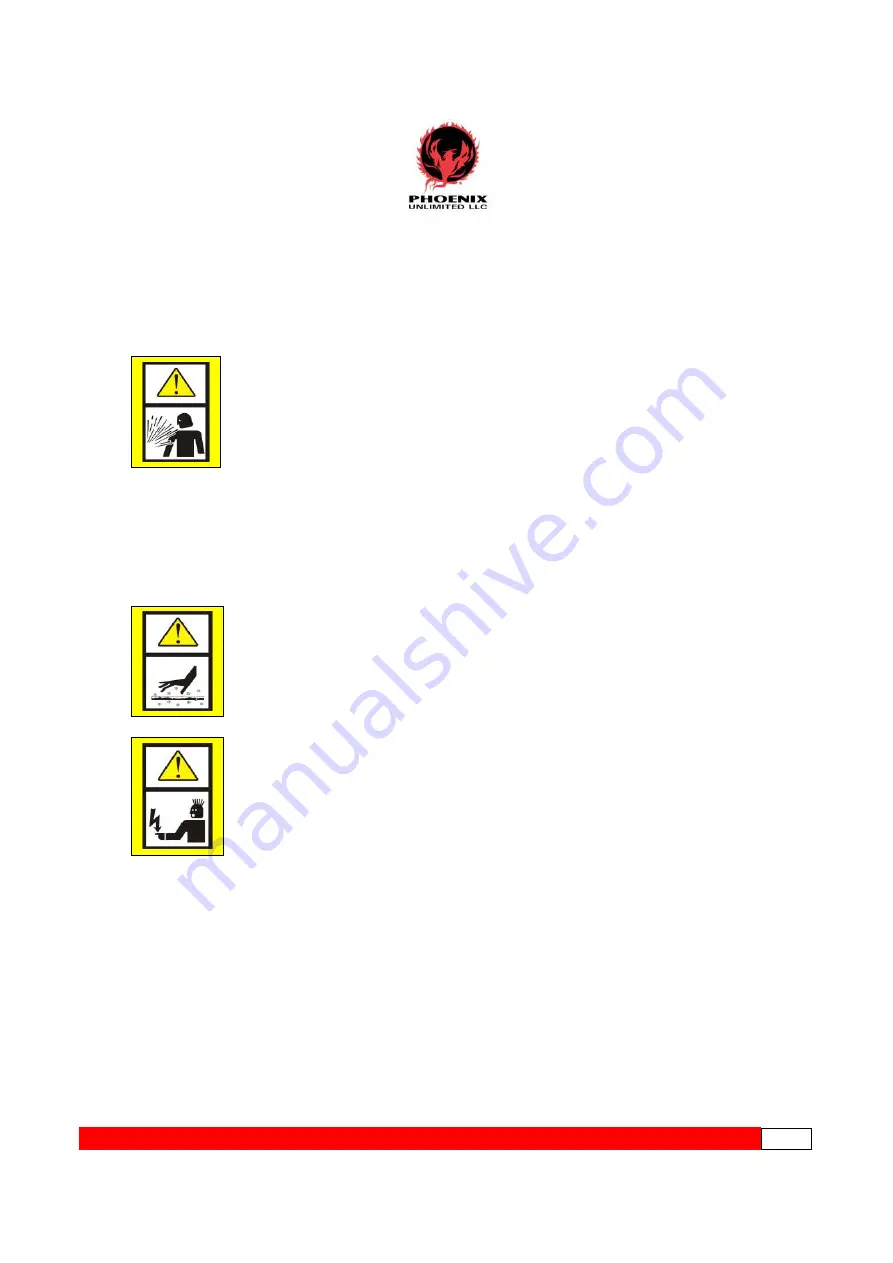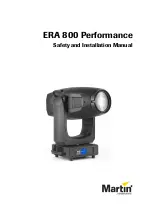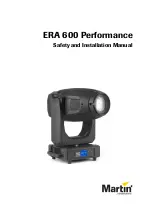
Ergonomics
The training process for using your new PHX-150 is relatively easy, but there will still be a “learning
curve” where technique and experience is concerned. The operator should understand that high velocity air
exits the gun barrel. Upon triggering the gun, the operator will experience a small reactive thrust, which
increases or decreases depending on pressure settings and air flow. Operator fatigue may also be an issue,
relating to blasting angles, pressure settings, dwell times, work area, temperatures, physical conditioning,
and time on duty. Do not exceed allowable limits as set by company policy and safety personnel.
High Velocity Particles
High velocity particles exiting the gun may cause serious injury. Never aim the gun at
yourself or others. The ice is sometimes difficult to see in the blast stream. However,
never use your hand, foot, or any other body part to check pellet flow. Do not blast
delicate or fragile items or equipment parts (i.e. glass or plastic gauge faces). Damage
may occur.
Moving Parts
Though the moving parts inside your PHX-150 are minimal, they are critical components and serious injury
may occur if safety parameters are not adhered to. Your machine incorporates an auger that turns, feeding
dry ice pellets into the delivery system. A safety sensor is activated to immediately stop the auger from
turning anytime the pellet screen is removed. Do not attempt to override this sensor. The auger drive motor
and chain are shielded by a protective guard and should never be operated without the guard in place. Do
not attempt to operate the airlock assembly while detached from unit. Always follow shut-down procedures
before attempting any periodic maintenance or repairs.
Burn Hazard
Dry ice is extremely cold, -109°F (-78°C). Do not allow skin to directly contact dry ice or
the outside of the PHX-150 hopper while it is loaded with dry ice. Doing so may cause
severe deep tissue burns. Always wear heavy-duty insulated gloves and long sleeved
clothing for protection when handling dry ice or cold equipment during use.
Static Discharge
The gun of the PHX-150 is grounded through the blast hose to the frame, then through
the special conductive front wheels; therefore any significant amount of static discharge
is uncommon. Still, the possibility exists that minor static discharges can occur pending
weather conditions, the travel of high velocity ice particles, etc. If static discharge is
experienced, wear the grounding wrist strap supplied with your unit. Also, you may wish
to add an additional wire from the machine to a good earth ground, AND ground the item
that you are blasting.
Caution: Static discharge may ignite flammables. Be aware of your surroundings!
Lower Limit Blast Pressure
The PHX-150 utilizes an additional regulator that maintains the blast pressure at 45 psi, even though it is
turned all the way down. When conducting function tests while the unit is energized, take the necessary
precautions to insure that the blast gun is secured and pointed in a safe direction.
Logic Control Stored Air Hazard
The control circuitry of this machine may trap air in and between associated components. Vent unit before
any maintenance or service is performed to prevent accidental release of trapped air.
Lock Out/Tag Out Precaution
Do not perform any type of service to this equipment until all lock out/tag out procedures have been
followed according to your company’s safety regulation guidelines. As mentioned previously (page 6),
a lock out hole (5/16”) is provided in the E-Stop valve handle if required.
*
*
*
*
*
*
*
*
*
*
*
*
*
*
*
*
*
*
*
*
*
*
*
*
*
*
*
*
*
*
*
*
*
*
*
*
*
*
*
*
*
*
*
*
*
*
*
*
*
*
*
*
*
*
*
*
*
*
*
*
*
*
*
*
*
*
*
*
*
*
*
*
*
*
*
*
*
*
*
*
*
*
*
*
*
*
*
*
*
*
*
*
*
*
*
*
*
*
P
P
H
H
X
X
-
-
1
1
5
5
0
0
*
*
*
*
*
*
*
*
*
*
*
*
*
*
*
*
*
*
*
*
Page 7








































